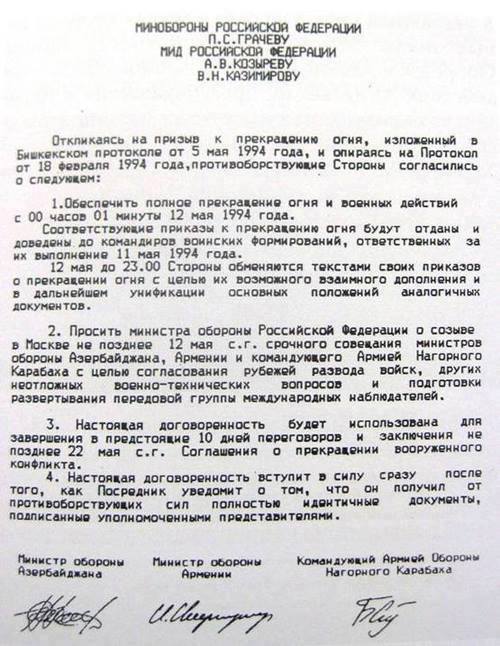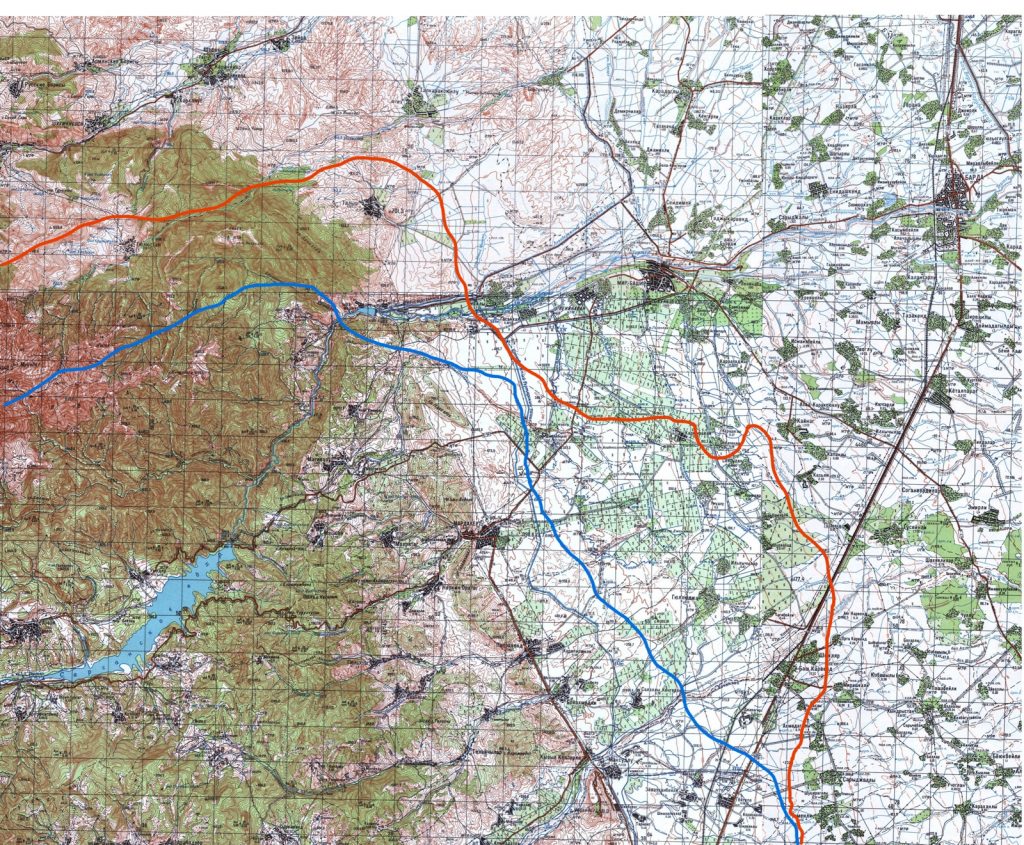
The text of the 1994 cease-fire agreement prepared and archived by Russian diplomat Vladimir Kazimirov.
From the Archives: The May 1994 Cease-Fire and How it Came About

diplomat Vladimir Kazimirov.
May 2019 marked a quarter century since the cease-fire agreement signed by Azerbaijan on one hand, and Armenia and Nagorno Karabakh on the other. Although frequently violated since, it put an end to the large-scale bloodshed that continued for more than two years after all three declared independence in 1991.
Many cease-fires were reached between 1991 and 1994, but none held for long. The May 1994 cease-fire initially seemed destined to follow suit, as political issues – most centrally the official status of Nagorno Karabakh – remained unresolved. Azerbaijan continues to insist on controlling all territories that were part of Soviet Azerbaijan. The Armenian sides contend this is impossible without resumed ethnic cleansing, in effect a genocide of Karabakh’s Armenian population.
These disagreements remain and they were evident in May 1994 as well. However, at the time it also became apparent for the Azerbaijani leadership that not only were they unable to gain any substantial territories by force, but also risked losing more.
After beating back the winter 1993-94 offensive by Azerbaijan, Armenians went on the offensive in the spring. Throughout April 1994, Armenian forces advanced towards the towns of Terter and Barda, putting the Azerbaijani leadership under renewed pressure. On May 2, then Azerbaijan’s number two, Milli Majlis head Rasul Guliyev arrived in Barda and visited the frontline. He later told scholar Tom de Waal that after the visit he determined that Azerbaijan’s position was “critical” and that a cease-fire was needed. On return to Baku, Guliyev made a report to Heydar Aliyev, who initially did not make his own position clear.
According to Azerbaijani scholar of the war Mamed Velimamedov from May 2-5, 1994 Azerbaijani forces counter-attacked and were able to partly reverse the Armenian advance in Agdam district. But on May 7 they were pushed back again, when another Armenian attack erased those gains. Velimamedov estimated overall frontline changes between April 7 (blue line) and May 12 (red line), on this map.
 In the meantime, on May 4-5 the parliamentary assembly of the post-Soviet Commonwealth of Independent States (CIS) met in the Kyrgyz capital of Bishkek. After debate, the Armenian and Nagorno Karabakh parliament leaders signed the assembly’s protocol calling on the parties to agree to cease-fire. A similar call was made the previous February, during the CIS presidential summit. In Bishkek, the Azerbaijani deputy speaker initially refused to sign. On May 8, Russia’s envoy for the talks Vladimir Kazimirov took the protocol to Baku, where it was signed by Guliyev. Notably, the signing came after Aliyev’s visits to Ankara and Brussels on May 5-7 and the Armenian advance in Karabakh on May 7.
In the meantime, on May 4-5 the parliamentary assembly of the post-Soviet Commonwealth of Independent States (CIS) met in the Kyrgyz capital of Bishkek. After debate, the Armenian and Nagorno Karabakh parliament leaders signed the assembly’s protocol calling on the parties to agree to cease-fire. A similar call was made the previous February, during the CIS presidential summit. In Bishkek, the Azerbaijani deputy speaker initially refused to sign. On May 8, Russia’s envoy for the talks Vladimir Kazimirov took the protocol to Baku, where it was signed by Guliyev. Notably, the signing came after Aliyev’s visits to Ankara and Brussels on May 5-7 and the Armenian advance in Karabakh on May 7.
But the Bishkek protocol was not the cease-fire agreement itself, rather it was a political call for cease-fire. The cease-fire itself was reached by the military leaders of Azerbaijan, Armenia and Nagorno Karabakh, respectively Mamedrafi Mamedov, Serzh Sargsyan and Samvel Babayan, on May 9-11, again through Kazimirov’s mediation. The cease-fire formally took effect from May 12 and the three military leaders met in Moscow on May 16 to discuss the details of a peacekeeping operations and associated troop withdrawals. Again, the Armenian sides agreed, but Mamedov protested Babayan’s identification in documents as the Karabakh army commander and left for Baku without signing.
In spite of that diplomatic demarche, the cease-fire, for the most part, continued to hold.